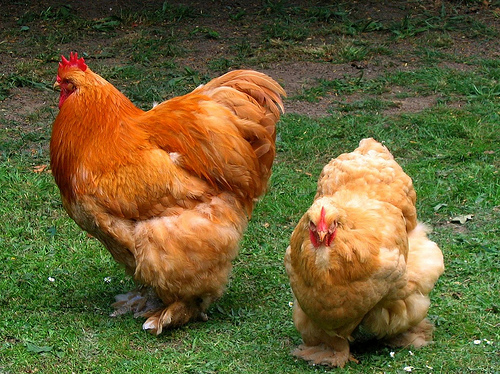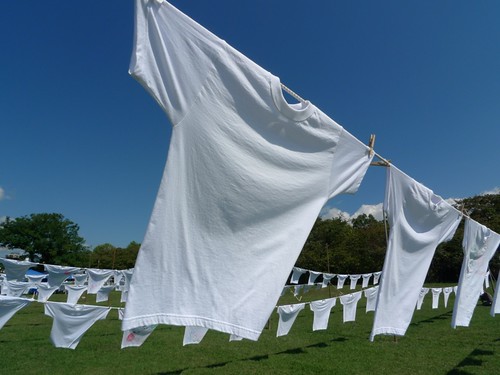You are currently browsing the Suburban Homesteading – Frugal Living blog archives for April, 2013.
Archives
- August 2018
- July 2018
- May 2018
- April 2018
- March 2018
- December 2016
- November 2016
- October 2016
- September 2016
- August 2016
- July 2016
- June 2016
- April 2016
- March 2016
- February 2016
- January 2016
- December 2015
- October 2015
- September 2015
- August 2015
- July 2015
- June 2015
- May 2015
- April 2015
- March 2015
- November 2014
- October 2014
- March 2014
- February 2014
- January 2014
- December 2013
- November 2013
- October 2013
- August 2013
- July 2013
- June 2013
- May 2013
- April 2013
- March 2013
- February 2013
- January 2013
- December 2012
- November 2012
- October 2012
- September 2012
- August 2012
- July 2012
- June 2012
- May 2012
- April 2012
- March 2012
- February 2012
- January 2012
- December 2011
- November 2011
- October 2011
- September 2011
- August 2011
- July 2011
- June 2011
- May 2011
- April 2011
- March 2011
- February 2011
- January 2011
- December 2010
- November 2010
- October 2010
- September 2010
- August 2010
- July 2010
- June 2010
- May 2010
- April 2010
- March 2010
- February 2010
- January 2010
- December 2009
- November 2009
- October 2009
- September 2009
- August 2009
- May 2009
- April 2009
- March 2009
Archive for April, 2013
Lessons In Laundry
Colorful quilt’s, faded blue jeans and bright whites hanging on an outdoor line is the quintessential picture of homestead life. But, don’t think fresh, natural smelling, line dried clothing is reserved only for those who live in the country – because it’s not. Every suburban house, whether it be home or homestead can garner the benefits and the pleasures of hanging laundry on a clothes line.
It may not seem that hard to stick a clothespin on a piece of clothing and put it on a line, but as many have found, the results can be scratchy, stiff and wrinkled clothing.
So – what are the tricks that will give you soft, fresh smelling clothes? They’re simple.
But, before you’re ready to hang clothes on a line you’ll need the right equipment for the job. That means a sturdy clothes line, clothes pins and a clothes pin bag or apron. There are several different styles of clothes lines to choose from, but I like the 5-line retractable dryer because it extends 34-feet, which gives you 170-feet of hanging space. I also like the umbrella style because it rotates and allows you to bring the clothes to you.
Clothes pins and bags are easily found at Wal-Mart and are very reasonably priced. But, you can tap into your inner farm girl and make your own by using a spare apron and sewing a 10-inch long pocket onto it, or for an adorable solution take a toddler size button-front shirt and stitch the bottom closed, then put it on a hanger, fill with clothes pins and hang on the line.
- To ready clothes for the line, put them in the dryer on an air or fluff setting for 5 – 10 minutes. This uses almost no electricity and will make your clothes just as soft as if you ran them through a full dryer cycle. If you don’t have a dryer hang, clothes on a windy day. The buffeting wind will create the same result as a fluff cycle.
- As you hang each piece of clothing give it a firm, sharp SNAP. This only takes seconds and will help shape the garment and shake out some of the wrinkles.
- When washing clothes, use a fabric softener or white vinegar to help soften them. This will help keep clothes dryer soft.
- If you live in areas of the country that have bright sunny days, fading may become a problem, but it’s great for brightening up whites. If fading is a concern, just turn colored clothes inside out before hanging them on the line. Fading can also be kept to a minimum if clothes are brought in as soon as they are dry. But, whites can be left out longer and will become brighter.
Now is it time to hang your clothes on the line? Not just yet. Read the rest of the story »
Checking Off Homesteading Skills
I saw this list of 101 homesteading skills and thought it would be fun to see how many of them I already knew how to do. After reading it over and checking them off I was surprised at how many I already use or knew how to do. It also gave me a good list of new skills to learn. Not all of them will pertain to a suburban homestead, but the list would be a good stating point for anyone trying to improve their knowledge of homesteading. And, I’m sure if we put our minds to it we could come up with 1001 things a homesteader should know.
Just for fun see how many you already know then make plans to learn a few new ones in 2013!
1. to use a chainsaw safely
√ to grow a vegetables & herbs
√ to sharpen an edged tool – knife, axe, hoe, chisel etc.
√ to use and store firearms safety
√ to tan rabbit skins
6. to read the weather
7. to spin wool, cotton or angora into thread or yarn using a spinning wheel or drop spindle
√ to use long handles tools without hurting your back
√ to light a fire indoors or outdoors
√ to buy at an auction without paying too much
√ to mend clothes
√ to butcher rabbits or chickens
√ to hang clothes on a clothesline
√ to operate & maintain a tiller
15. the unique traits of different trees & their types of wood
√ to cook from scratch
17. to pasteurize milk
√ to conserve & save water
√ to recognize healthy plants & animals versus unhealthy
√ basic sewing skills
√ to ear tag or tattoo an animal
√ to tell an animal’s age by its teeth
23. to replace a broken window
√ to drive a stick shift
25. Learn how to thaw out frozen pipes without busting them
√ to graft a fruit tree
27. to hand thresh & winnow wheat or oats & other small grains
28. to train a working cattle or sheep dog
29. to read the moon and stars
√ to make cheese
√ to live within your means
√ to catch, clean & fillet a fish
33. to use a wash tub, hand-wringer and washboard
√ to make soap or detergent
√ to build a bunk planter
√ to can canning & preserve food
√ to save seeds
√ to de-horn livestock
√ basic leather work or repair
√ to plan for the future – orchard, livestock program, or energy sources
√ to repair with duct tape, baling twine or whatever is on hand
√ to read an almanac
√ to put down an animal
√ to cook on an open fire
√ entertain yourself without electronic media
√ to shear a sheep, electric & hand
√ to maintain shears
√ to swap, barter and network with like-minded people
√ to make candles
50. to dig & use a shallow well
√ to refinish furniture
52. to drive a draft animal
√ to realistically deal with life, death and failure
√ to use & maintain an oil lamp
√ to treat livestock injuries
√ to restrain large livestock
√ to use a sewing machine
√ to give an IM or Sub-Q injection
√ to properly use hand tools
√ to recognize your own physical and mental limits
√ how and when to prune grapes and fruit trees
√ to hatch out eggs
63. to use a scythe
64. to skin a furred animal & stretch the skin
65. to tell the time of day by the sun
√ to milk a goat, sheep or cow
√ to stomach tube a newborn animal
√ to butcher large livestock
√ to use a wood stove & to bank a fire
√ to make butter
71. to knit or crochet
√ to make & use a hot bed or cold frame
√ to deliver a piglet, calf, lamb or goat
74. to know when winter is over
√ to plant a tree
√ to brood day-old chicks
77. to dye yarn or cloth from plants
√ to haggle like a horse trader
√ to bake bread from scratch
80. to use a pressure tank garden sprayer
√ to halter break a horse, cow, sheep or goat
√ to graft baby animals onto a foster-mother
83. to weave cloth
√ to grow kitchen herbs
√ to make sausage
√ to set and bait traps for unwanted vermin and predators
√ to grind wheat into flour
88. to make paper and ink
89. to learn when it is more economical to buy ready-made or make it yourself
√ to castrate large livestock
√ to choose a location for a vegetable garden or orchard
92. to weave a basket
93. to use electric netting or fencing
√ to make fire starters
95. to use a pressure cooker
96. to correctly attach 3 point hitch implements to a tractor
√ to trim hooves of goats or sheep
√ to sew a quilt
99. to make wine or beer
√ basic plumbing & electrical
√ to shoot a rifle & handgun
73 down
28 to go!
Not bad. Not bad at all!!
The Great Chicken Debate – Cornish Rock Crosses vs. Heritage Breeds

Today’s grocery store chickens are hybridized to be exactly the same as all the other grocery store chickens. They are bred to grow the same, finish out the same and be similar in weight. This fast-growing breed is called a Cornish Rock Cross. Typically, they range in age from 4-weeks, for a Cornish Game Hen, to 8 to 10 weeks for a full grown roaster. The chickens are the same; only their name has been changed, taking labels given to chickens from days gone by.
So, if you’re thinking that a Cornish Game hen is not a Cornish Game hen at all, but rather a baby Cornish Rock Cross, you’d be right. Cornish Game hens are not raised commercially any longer because they take too long to grow to a marketable weight.
Modern grocery store chickens also have white feathers and were developed in the 1980’s to gain weight fast on a limited amount of feed. It is true that some birds grow so fast that they sometimes have heart attacks or break down in their legs before ever reaching a butcherable weight. But, I think that is a factor in commercially raised birds more than homestead or small farm raised birds. Some growers even limit the feeding schedule to slow down the birds’ growth.
And, what about those white feathers? Well—the average consumer wants a pretty carcass to make a pretty roasted chicken to put on her family’s dinner table. Non-white feathered chickens can have black spots in the skin where the pin feathers broke off during plucking. This happens to white chickens too; only the consumer can’t see them because they are white. Read the rest of the story »


Recent comments
Aenean nonummy hendrerit mauris. Phasellus porta.